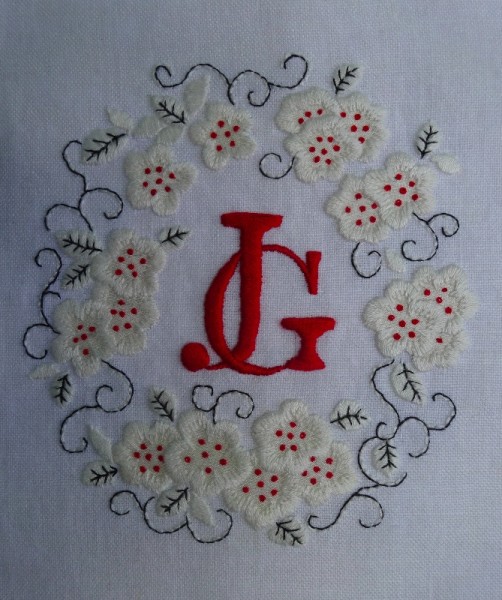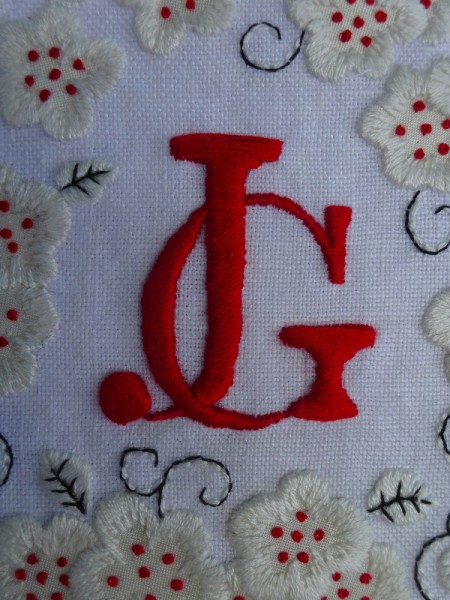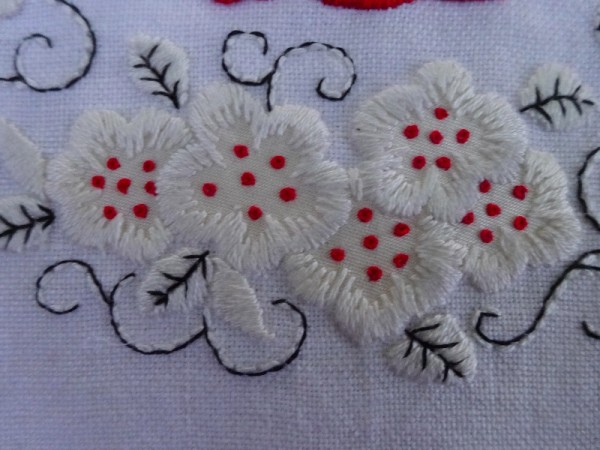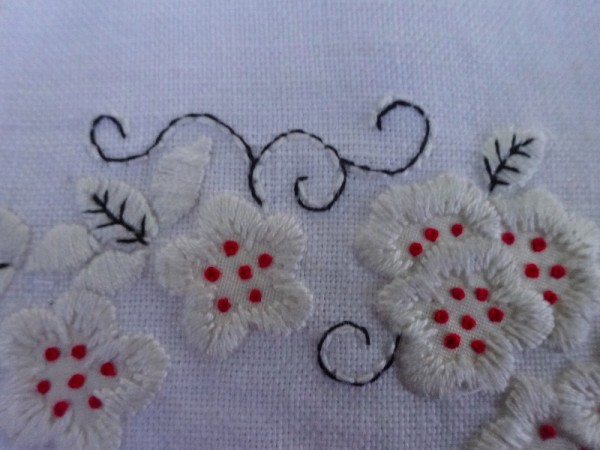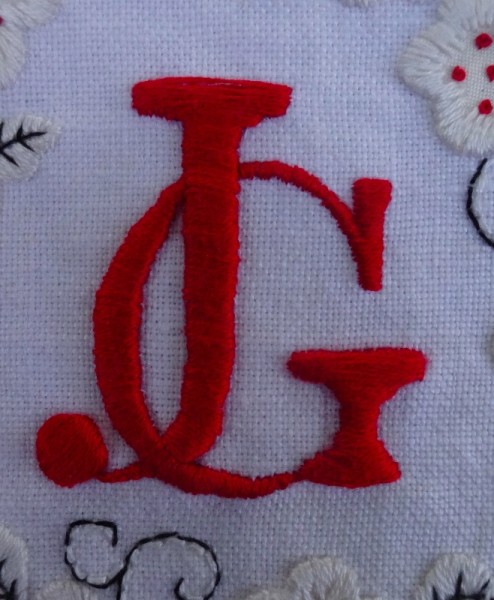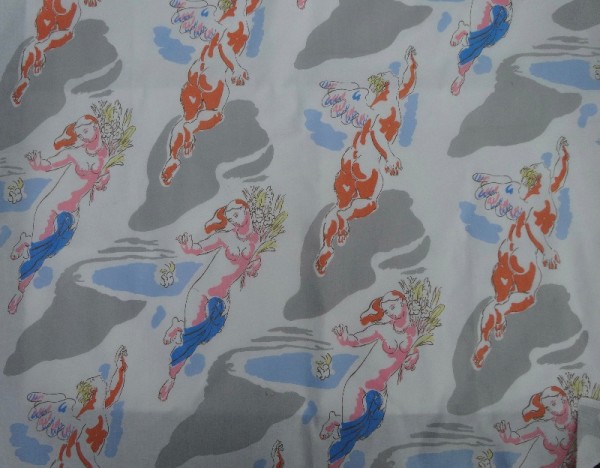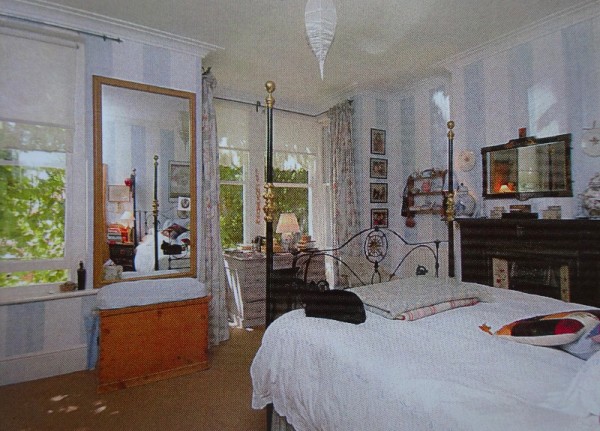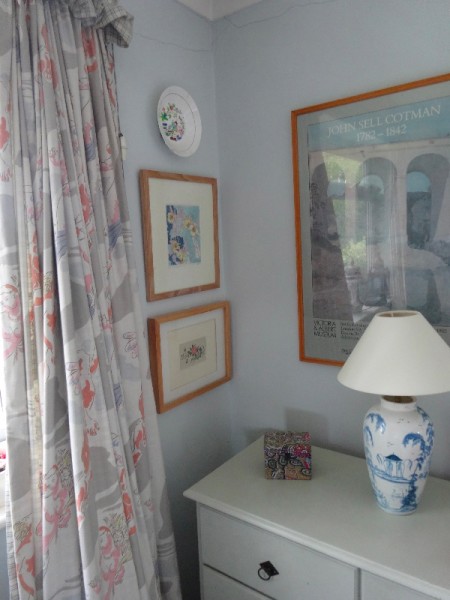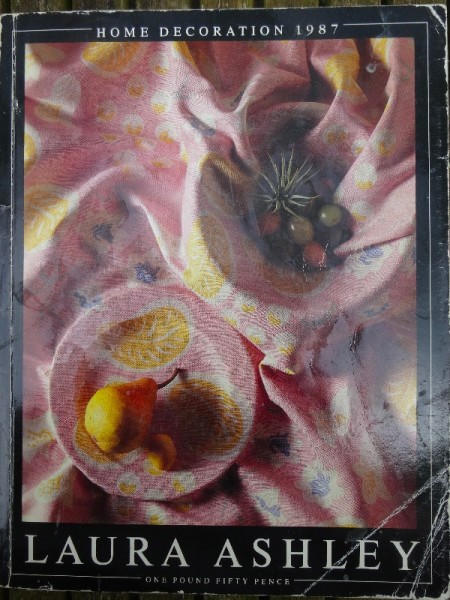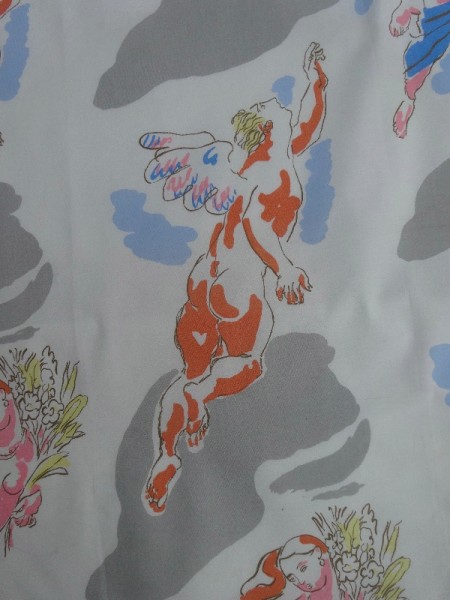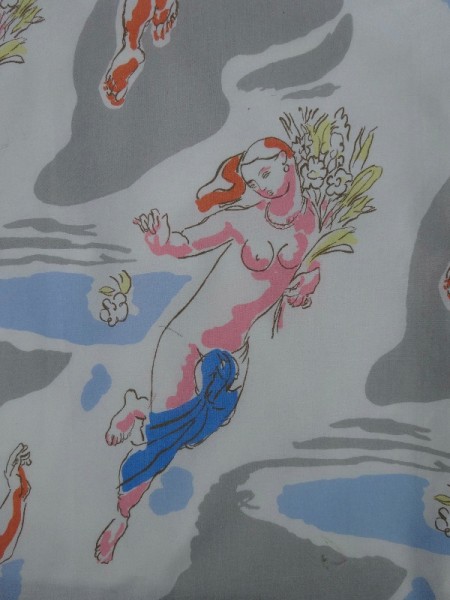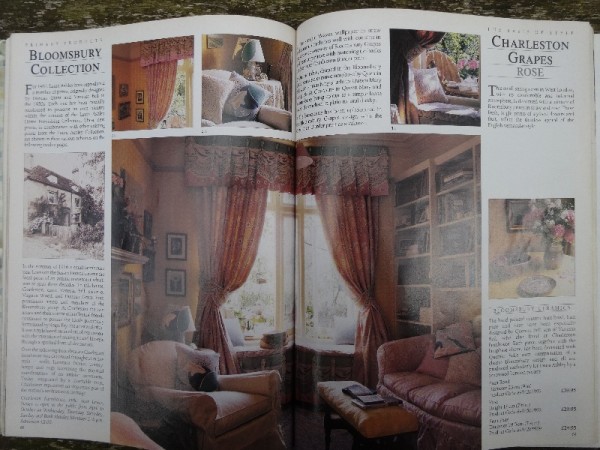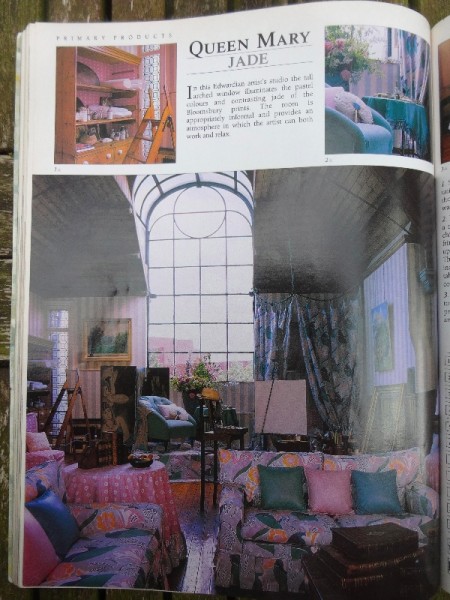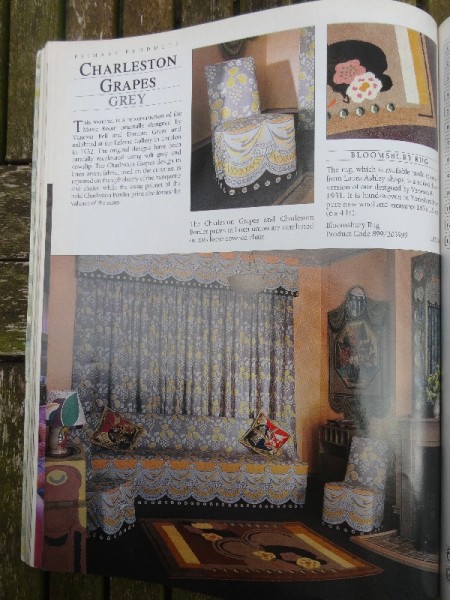A quick post to show you a simple monogram of 2 letters which I finished off when I returned home from my stint in London. Ever so slightly entwined, these initials look bold in red which I find I have become increasingly fond of for monograms – that is when I’m not doing whitework. I embroidered simple flowers on appliquéd satin. My original idea was to outline the flowers in a fine black thread which I would also use for the french knots in the middle of the flowers. This looked too heavy however so I opted instead for a few spidery curlicues in backstitch which looked better. French knots in the flower’s centre morphed from black, through off white to red which latter I thought worked best.
My inability to get properly organised with sewing projects when away from home makes me wonder whether there are certain character traits I’ve never really overcome. When I was a little girl, I was often taken to see my older brother play cricket or rugby on a Saturday afternoon – home and away. I was much younger than my brother and in order not to be bored, I would weigh my father down with paper and coloured pencils, jigsaw puzzles, packs of cards, a doll in a carry cot (with a change of clothes and blankets) and the odd book or two.
In fact I adored the long afternoons of cricket (in particular) which I would spend meandering round the boundary chatting to other parents whose picnics I would be invited to share, rolling down the grassy slopes at the edge of the ground covering myself in sweetly smelling newly mown grass or ‘helping’ the groundsman’s wife with the players’ teas – dolloping out jam from industrial containers or struggling with teapots the size of watering cans. As a child I thoroughly disliked tea as a drink and was not much keener on jam sandwiches but somehow in a cricket pavilion on a Saturday afternoon there was nothing that tasted better.
As an aside, now I think about it I’m sure my first fashion conscious moment came beside a cricket pitch (that is if you don’t count pouring through Ladybird books and scrutinising what ‘mother’ was wearing – usually variations on printed spots). Having made several circuits of the boundary rope I found myself sitting next to the Groundsman’s pretty elder daughter who, looking wonderful in a flowery dress with full skirt and petticoats, posed herself carefully, tossed her lovely fair hair and impressed me with the announcement that she was trying to look sophisticated. I was awe struck. (Slightly sadly I suspect that in my own life I have never come anywhere near to attaining such a peak of visual sophistication.)
Well, that interlude was a long way round to saying that, just as I packed for every eventuality to counter boredom as a child, whenever I go to stay and help out in London I have a case similarly full of ‘what ifs’. I usually travel with a main sewing project, a backup and often a backup backup. And, just like my forays onto the cricket pitches of Nottinghamshire, most of my work remains untouched – except in this case for the piece that was technically finished and being returned to its owner. You remember the feather embroidered cashmere jumper blogged about here, well perversely, I found myself itching to embroider more feathers – and more never quite seemed enough even when the original 7 I blogged about seem to have increased to 24 (with perhaps 2 more still to do)!
In my case, the monogram remained unfinished through indecision as to the colour of the french knots, the curtain tie backs to be embroidered lay untouched because I couldn’t get excited enough about them and the knitting – an inset shawl collar requiring circular needles – proved to be too taxing for the novice knitter that I am. More feathers just seemed like the easiest option. I don’t think I will ever be able to let myself pack nothing that needs sewing/knitting/mending but perhaps one day I will pack just one project which I will doggedly commit to. Here’s hoping.

